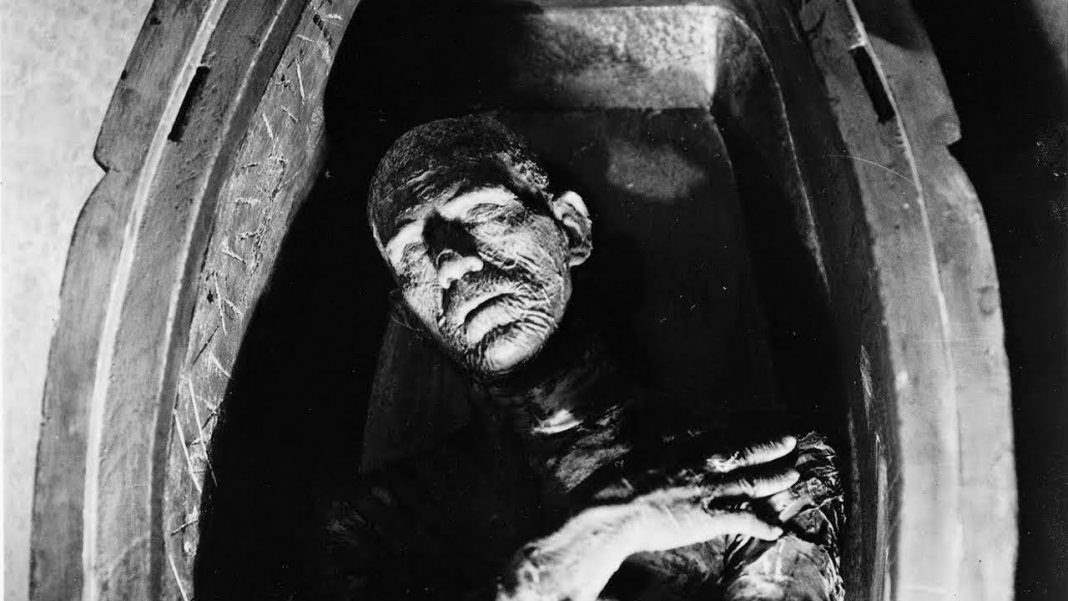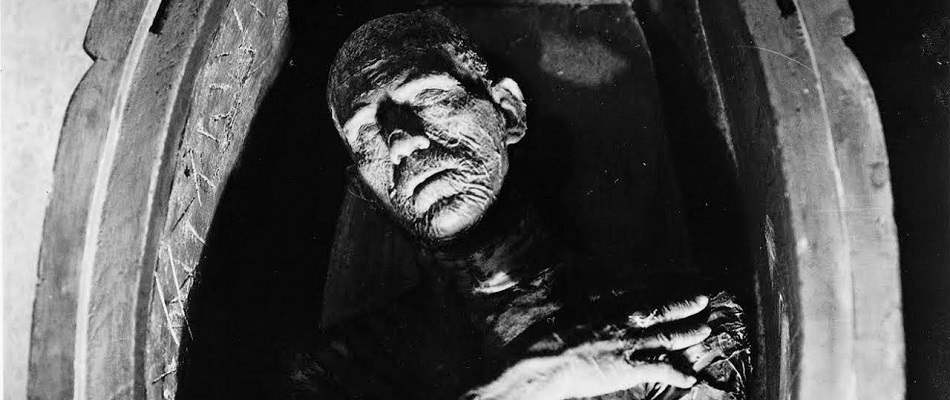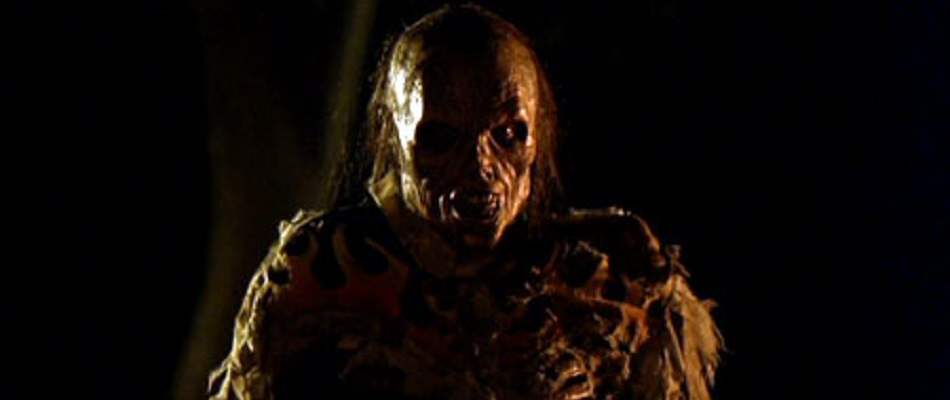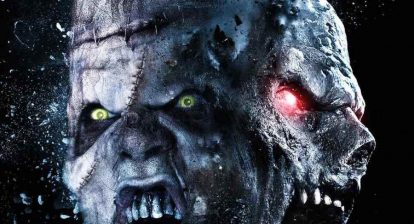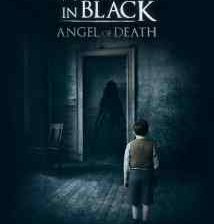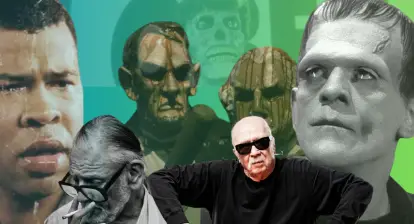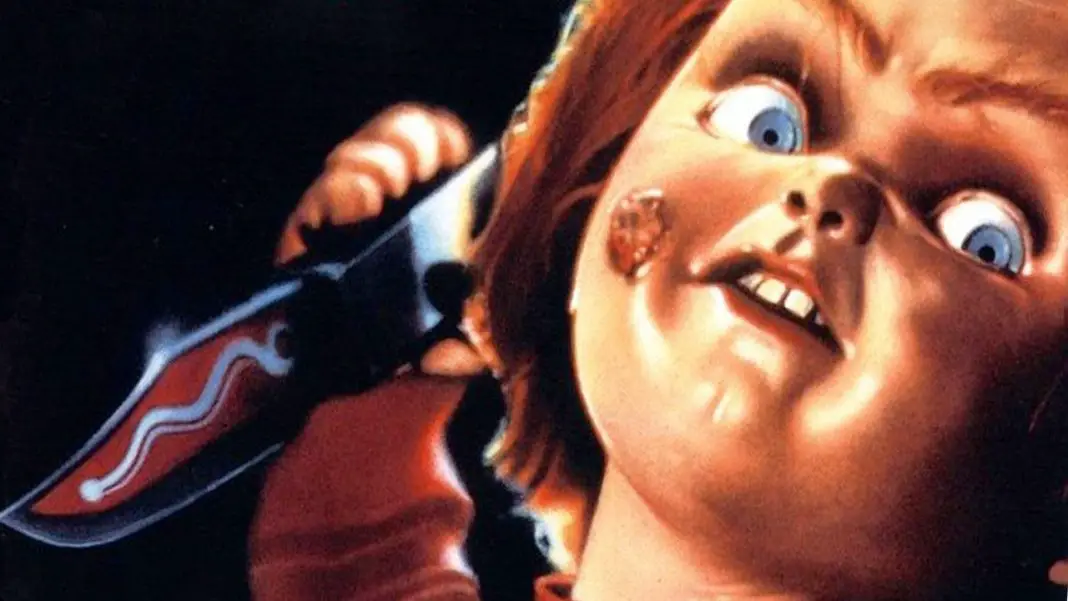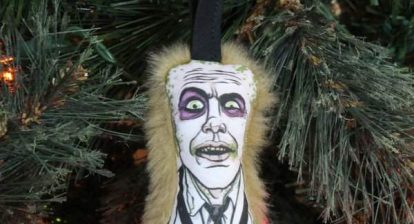Mummies haven’t really gotten their due on film. They’ve never been as popular as vampires or werewolves and zombies have always been the ruling class of shambling corpses. Sure, there have been no shortage of horror movies centering on mummies, but when compared to zombies they’ve barely made a dent. Still, there are some regarded as classics that can’t be discounted. 1932’s The Mummy is one of the best of the original Universal run. It’s not the traditional walking mummy feature that most people are familiar with. It’s a dark romance about a resurrected priest who awakens after losing his beloved thousands of years ago and believes the female lead to be his princess reincarnated. It’s sad, poetic and Karloff gives one of his best performances in it.
Like Dracula and Frankenstein before it, Universal followed The Mummy with a slew of sequels. Unlike those others, the Mummy sequels wouldn’t follow for almost ten years. The first of the bunch was The Mummy’s Hand, which really gave birth to what we think of when we think of the traditional shambling mummy movie. It was followed by The Mummy’s Tomb, a direct sequel whereas The Mummy’s Hand was not. Somewhat like Prom Night, the original is actually the odd man out in Universal’s first Mummy franchise.
From The Mummy’s Tomb until The Mummy’s Curse, the mummy was played by Lon Chaney Jr. who had seen previous success as the Wolf Man and is the only of the original Universal actors to play each of the classic monsters. Spanning six films, the Universal Mummy series came to an end in 1955 with the parody Abbott and Costello Meet the Mummy.
Related: Script to Pieces: Clive Barker’s The Mummy
It was revived only four years later with Hammer’s The Mummy. This new take felt very much like a precursor to the modern slasher movie. It benefitted—as many Hammer productions did—from Peter Cushing and Christopher Lee, with Lee playing the silent creature just as he had done previously in The Curse of Frankenstein. It’s impressive how much Lee is able to convey rage and pain when the only parts of him that are visible are his eyes. Of course, this could have had something to do with the arduous makeup process.Hammer’s Mummy series kept going much like Universal’s did, with each new entry centering on a different murderous corpse. Luckily, it shifted gears with the best sequel in the franchise, 1971’s Blood from the Mummy’s Tomb. It was completely different than the earlier mummy features. It was sexier, funnier and darker all at the same time. While it may feel out of place, it was actually based on Bram Stoker’s mummy novel The Jewel of Seven Stars, which is widely considered to be the first evil mummy story in horror fiction, even though it was preceded by Sir Arthur Conan Doyle’s “Lot No. 249.”
For the rest of the decade, mummies all but disappeared. And in the 1980’s, they didn’t have much better luck. Time Walker got featured on Mystery Science Theater 3000. The mummy had pretty much run its course as a movie monster and there wasn’t much new that filmmakers could find to do with it. Luckily, the ‘80’s at least gave one feature built on nostalgia for the Universal monsters: The Monster Squad. The Mummy isn’t given as much to do as the others in that one, but at least has an excellent makeup design courtesy of Stan Winston. And while it wasn’t a feature production, the pilot to Steven Spielberg’s anthology TV series Amazing Stories centered on a mummy.
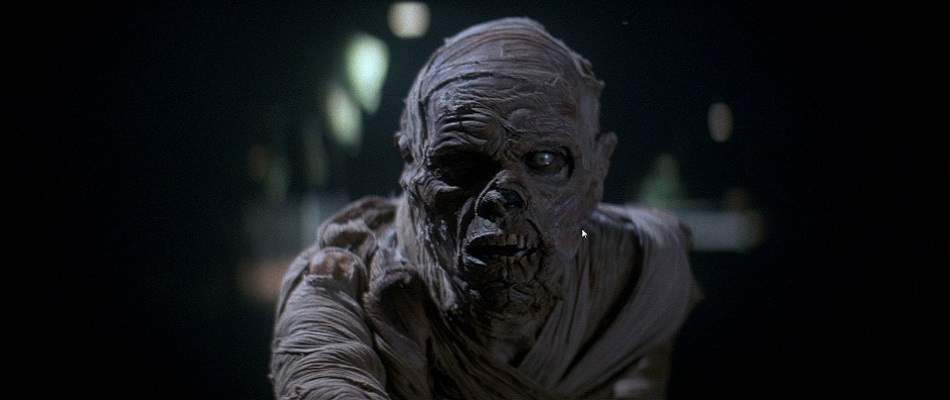 Right out of the gate in the 1990’s we had Tales from the Darkside: The Movie adapting Arthur Conan Doyle’s “Lot No. 249.” That didn’t exactly lead to a major resurgence in mummies on film, but that’s always been the problem with this pseudo-sub-genre. There’s never really been a surge in the first place. While a mummy movie might be popular, mummy movies as a whole have never generated much interest. The rest of the 1990’s saw the straight-to-video cash-in Bram Stoker’s The Mummy—an adaptation of Jewel of Seven Stars titled to sound like a spinoff of Bram Stoker’s Dracula—and the Disney Channel feature Under Wraps, which is basically Encino Man with a mummy.
Right out of the gate in the 1990’s we had Tales from the Darkside: The Movie adapting Arthur Conan Doyle’s “Lot No. 249.” That didn’t exactly lead to a major resurgence in mummies on film, but that’s always been the problem with this pseudo-sub-genre. There’s never really been a surge in the first place. While a mummy movie might be popular, mummy movies as a whole have never generated much interest. The rest of the 1990’s saw the straight-to-video cash-in Bram Stoker’s The Mummy—an adaptation of Jewel of Seven Stars titled to sound like a spinoff of Bram Stoker’s Dracula—and the Disney Channel feature Under Wraps, which is basically Encino Man with a mummy.
But then 1999 gave us the Universal remake of The Mummy. While it kept the same basic story beats of the original, it was an Indiana Jones-style epic whereas the first had been a gothic horror story. It was a totally different genre, really, but it connected with people. The Mummy was a huge box office success. It took a whole decade to finally put this remake together, too, with Joe Dante, Clive Barker, George Romero and many more attached before the job eventually went to Stephen Sommers. In some ways, though, it was the exception that proved the rule. Despite all the money this one raked in, it didn’t lead to a whole slew of mummy movies to try and recapture its success. Instead, it led to two sequels and that was it.
Since that time, things have once again been quiet on the mummy front. It’s too late to hope for a boom. If it hasn’t happened since 1932, it won’t be happening now. Finding a good horror film about mummies will always be very much like finding a mummy itself. It takes a lot of digging and most of the time you come up with nothing at all.
